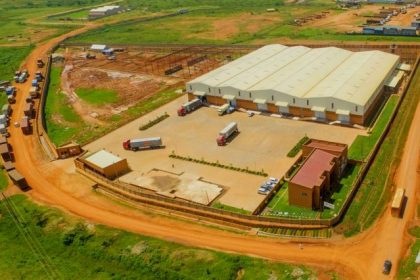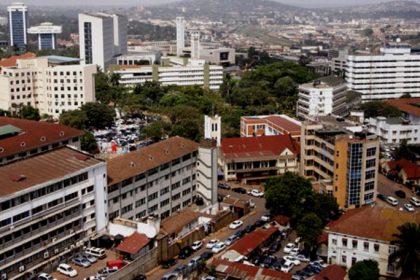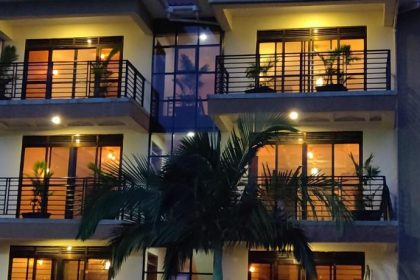Credit squeeze in first six months dampens Kampala property market
 The sluggish start to the year witnessed at the start of the year persisted throughout the half year. In the period under review, the market was strained, with supply outstripping demand, thus creating a buyer’s market.
The sluggish start to the year witnessed at the start of the year persisted throughout the half year. In the period under review, the market was strained, with supply outstripping demand, thus creating a buyer’s market.
A credit squeeze in the first half (H1) of 2024, during which Bank of Uganda (BoU) raised the base lending rate to tame rising inflation, caused a slowdown in demand for Kampala residential properties according to the latest Knight Frank (KF) market report.
At the beginning of April BoU raised the Central Bank Rate to 10.25 pc from 10 pc, however it reverted back to 10 pc after an easing off of inflationary pressures and signs of recovery in the economy.
The real estate consultancy and management firm said the prime residential and prime commercial office markets exhibited a slowdown in performance in H1 2024, marked by a low volume of sales and lettings and a minimal one percent decrease in occupancy levels compared to H1 2023.
The residential rental prices remained stable and there is a noticeable increase in pipeline activity with over 1,000 units expected to be released onto the market over the next 12-24 months. There remains a persistent demand for units within the $200,000 to $300,000 price range in prime areas.
According to the report, ‘Demand for prime residential units continues to be driven by the expatriate community working in Uganda and Ugandans in the diaspora, with a noticeable preference for two and three-bedroom apartment units and standalone houses respectively. Naguru, Kololo, Nakasero, Mbuya, and Bugolobi dominate as the preferred prime residential areas; however, there has been increased interest in Lubowa, Kigo, and Muyenga areas.The increased interest is from developers looking to set up gated communities to compete against the continued supply of apartments in Kololo’.
However, prime office space demand persisted, with prime net rents recorded at $16.5 and $15.0 per square metre per month for Grade A and Grade AB, respectively. There has been a slight decline in occupancy levels for Grade A and AB properties, with vacancy rates increasing by one percent compared to H1 2023.
The retail sector registered notable performance in the first half of 2024, benefitting from a resilient economy, increased occupancy levels resulting from new entrants, the expansion of existing retailers within the sector, and strong product and tenant-mix offerings within the various malls.
The report states: ‘H1 2024, registered a slow take-up of warehouse space while a slight increase in industrial land for sale was noticed. BoU announced the start of a Domestic Gold Purchase Program to build the country’s foreign reserves and minimize risks on reserves investments, a program that will impact the livelihood of artisanal and small-scale miners directly, with positive spillover effects on other economic sectors’.
The sluggish start witnessed at the start of the year persisted throughout the half year. In the period under review, the market was strained, with supply outstripping demand, thus creating a buyer’s market. The increased residential properties supply was on account of stock from the development pipeline, off-loading properties through auctions and repossessions by banks and other credit institutions as well as individuals and companies disposing off properties to cater for their liquidity needs.
This has resulted in increased interest in distressed sales as buyers take advantage of the market skewed in their favour. The sales market for home ownership and investment properties continues to grow steadily in the affordable–middle– income segment of the commuter towns such as Kira, Mbalwa, Kyanja, and Kungu, among others, as developers strive to meet the continued housing demand from the growing population.
The average prime monthly rents for 2- and 3-bedroom apartment units in the review period remained stable compared to H1 2023, while occupancy levels declined marginally from 82% to 81%. Old, detached houses/re-development plots in the prime residential areas continue to be demolished and replaced with modern apartment blocks. Developers are taking advantage of economies of scale from the densification of Brownfield sites with multi-let units, increased rental incomes, and shared operational costs.
This trend has been observed in the prime areas of Nakasero and Kololo, where new developers are debuting in high-density residential developments. This trend has created a gap in the market for the supply of stand-alone houses, with tenants looking for stand-alone houses turning to the secondary residential areas of Mbuya, Munyonyo, Muyenga, and Bugolobi, among others.
In response to tenants’ demand for modern interior finishes and more amenities, developers are upgrading the specifications for developments in secondary residential suburbs, albeit at higher rental and sale prices. The dollar rental/sale market continues to grow to the secondary residential suburbs of Nalya, Kyanja, Bukasa, and Najera, among others, especially in newly constructed projects.
Access to fast and reliable internet continues to be an essential factor for tenants when selecting accommodation; this has resulted in the existing telecom companies expanding their optical fiber networks to the secondary residential suburbs with new players like Canal Box entering the industry. Several access roads to the commuter towns are being upgraded from murrum to tarmac while others are being resurfaced under the Greater Kampala Metropolitan Area Development Program. Better quality road networks will have a positive impact on the marketability and land prices of these suburbs.
Demand for smaller office space (50-150 sqm) has persisted from the IT/telecom, retail, legal services, business and professional services, energy, industrial, and financial service sectors.
Deal conclusion for larger spaces (200-1,500 sqm) is taking an unusually long time to conclude, as a result of complex decision-making and due diligence processes in line with corporate governance requirements and increasingly stringent requirements from the Uganda Registration Services Bureau (URSB) and the Uganda Revenue Authority (URA).
Pipeline office projects include Pension Towers, Lumumba Avenue; Speke Business Park Yusuf Lule road; Plot 5, Luthuli Avenue Luthuli, Bugolobi; Saddler View Office Park (Mixed) Saddler Ave, Naguru; IGG Building Opposite Garden City; Twed Heights Kyadondo 13 and JLOS House at the Naguru Police Campus.
The demand for larger spaces is being driven by public entities, NGOs, financial institutions, telecommunications, and industrial & logistics organizations, among others. According to the report, ‘Occupancy levels for less prime properties are being negatively impacted by organizations looking to downsize, relocate to more affordable or better facilities, and or close shop. The increased stock of high-specification, modern office buildings with higher parking ratios coming onto the market at rental levels which are comparable to current passing rents are offering better value for money to occupiers in older stock.
‘Thus, we are seeing older properties being upgraded and refurbished given that they are in excellent locations and still able to achieve decent rental levels on account of this, Lease terms for small office occupiers (20-150 sqm) range between two and three years, with most requesting breakout clauses after six to 12 months while the lease duration for large office occupiers ranges between three and five years,’ the report reads in part.

 Knight Frank reports sustained demand for industrial space
Knight Frank reports sustained demand for industrial space
 Upturn in Kampala’s residential housing sector as economy recovers
Upturn in Kampala’s residential housing sector as economy recovers
 Uganda’s proposed tax changes may dampen investor confidence
Uganda’s proposed tax changes may dampen investor confidence
 Kampala metropolitan real estate market recovers from lows after pandemic
Kampala metropolitan real estate market recovers from lows after pandemic
 Stanbic Bank introduces insurance package to protect schools from risks
Stanbic Bank introduces insurance package to protect schools from risks
 Emerging oil industry helps to revive Kampala high-end residential market
Emerging oil industry helps to revive Kampala high-end residential market
